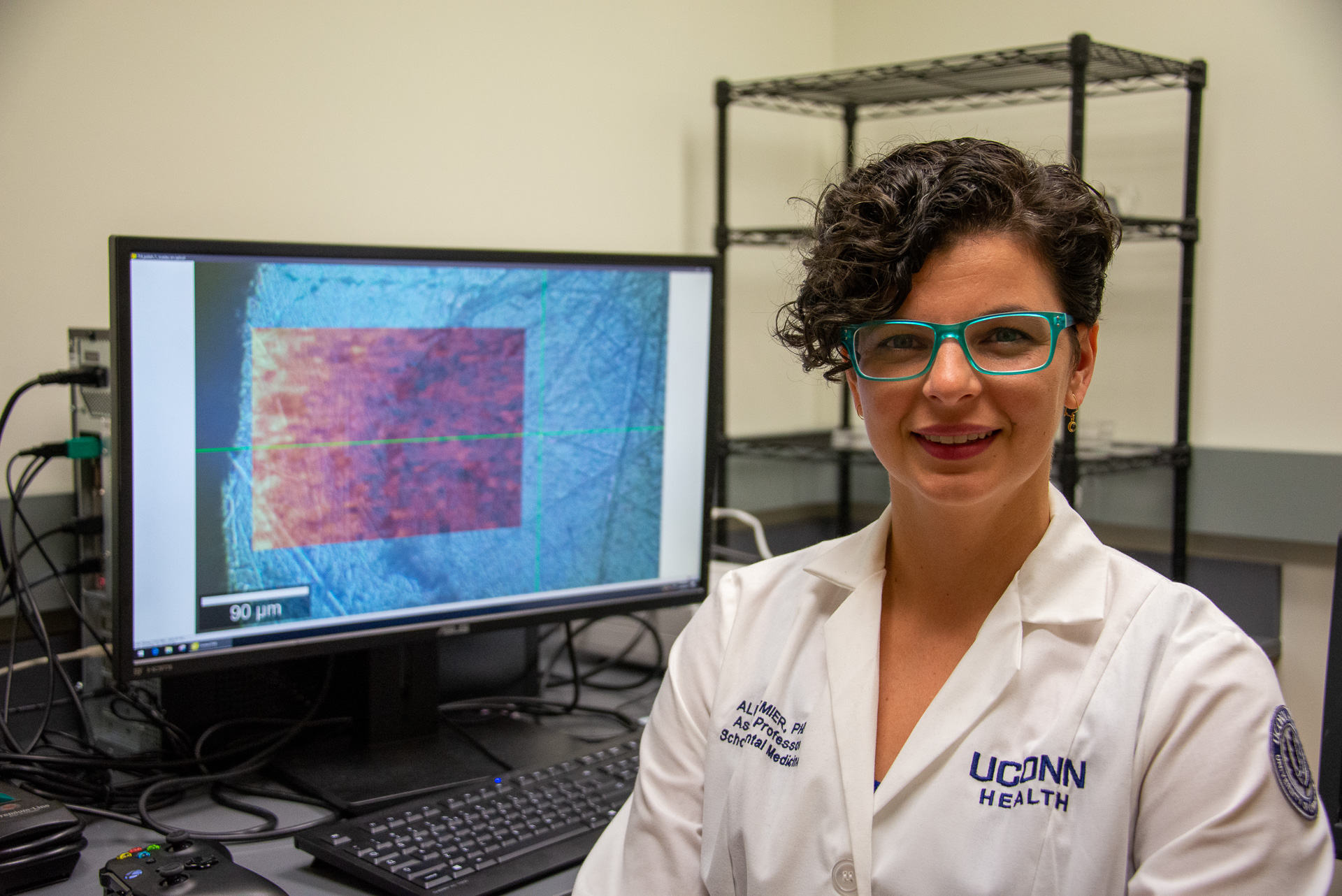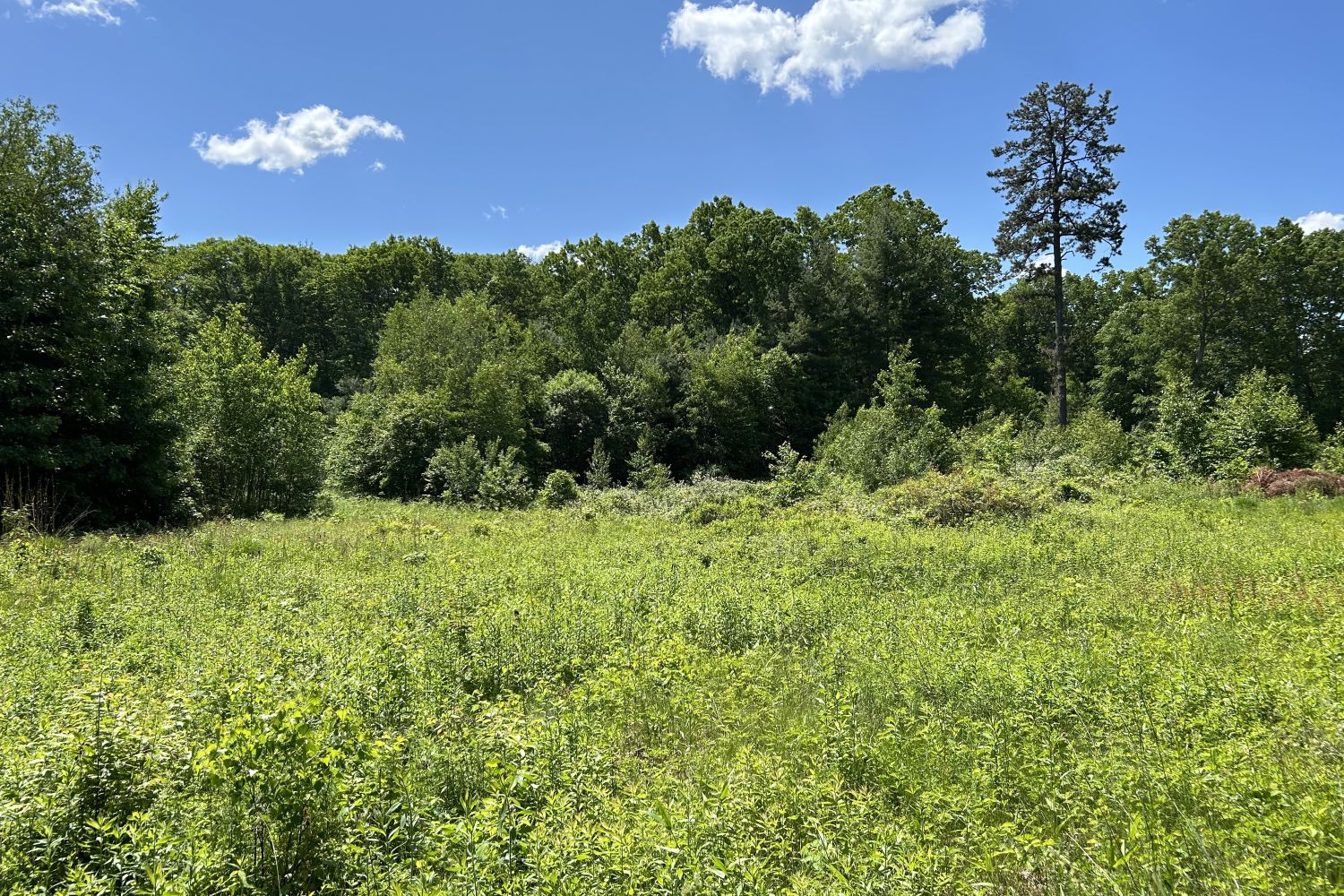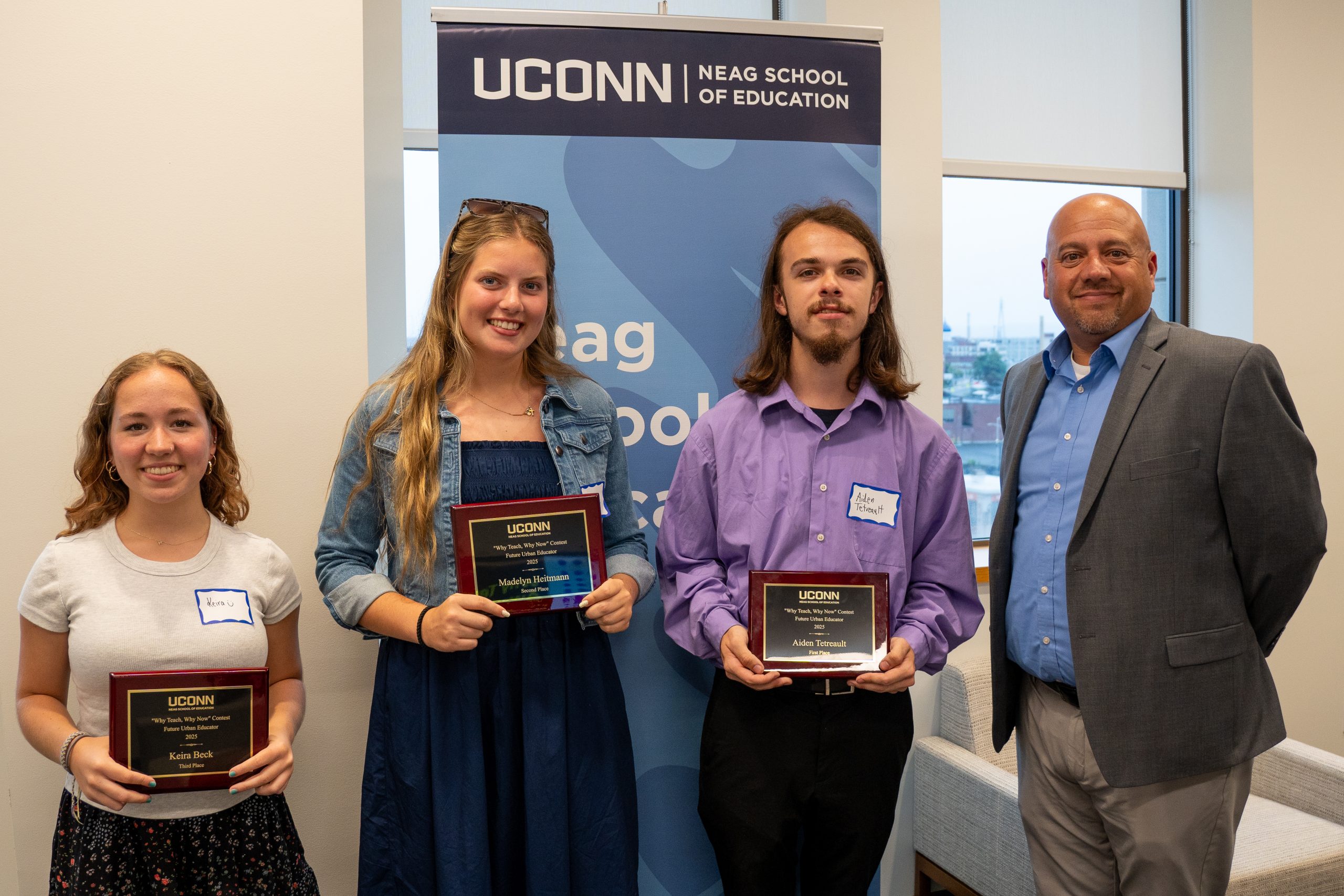A professional dancer, model, circus artist, choreographer, and assistant professor of biomedical engineering. UConn Health’s Alix Deymier has been in all these roles through her winding path to an illustrious career researching bones.
Deymier always knew she wanted to be a scientist, but she wasn’t sure exactly what kind of science she wanted to study. She graduated from the University of Arizona with a bachelor’s degree in materials science and engineering with a special focus on cultural heritage and art restoration.
“The type of science I wanted to do was really wishy-washy and I loved art,” Deymier says. “I’m a museum junkie – my parents always joke that museums are my cathedrals.”
After struggling to find a job in this field, Deymier went to Northwestern University where professor David Dunand said if she worked with him on a Ph.D. studying bone mechanics, she could continue working with art on the side.
Through her research with Dunand, Deymier used high-energy X-rays to look at the nanomechanics of teeth and bones.
“In the process, I absolutely fell in love with bones,” Deymier says.
Faced with the choice between continuing her study of bones or trying to return to art conservation, Deymier chose bones.
“In the end, I just decided that I liked the bone aspect better. There was so much more to do, there was so much more access to things. It was just such a cool material.”
After graduate school, Deymier went to St. Louis where she started her post-doc at Washington University in orthopaedic surgery. During her post-doc, Deymier received a NASA fellowship to study what happens to bones in space.
In St. Louis, Deymier, a recreational dancer since childhood, joined a professional dance company and later a mixed dance and circus arts performance group.
“I still think it’s one of the most amazing things I’ve ever done,” Deymier says.
During one of her final performances, Deymier fell from a trapeze and shattered all the bones in her left shoulder area.
Turning from bone researcher to orthopaedic patient provided Deymier with a clinical perspective on the area she studies.
“I got that clinical concept of ‘we have to make decisions as medical doctors that are in the best interest of the patient,’” Deymier says. “I’m coming from the research aspect where we don’t have these clinical limitations, so it was super interesting.”
Partway through her post-doc training, Deymier’s advisor asked her to relocate with his lab to Columbia University in New York.
Deymier’s focus has shifted since then to studying how bones are affected by acid-based diseases like metabolic acidosis. Metabolic acidosis is when the body becomes too acidic either due to chronic conditions like diabetes or kidney disease, poor diet, or after having abdominal surgery. One of the most serious effects of metabolic acidosis is the dissolution of bone.
“We know that it’ll dissolve your bones and that’s pretty much where the knowledge stops,” Deymier says.
Deymier and her team are now looking at the bones of mice models with induced metabolic acidosis. So far, the results have not been what she was expecting.
“It’s so fun in science to have this element of the unexpected constantly,” Deymier says. “You have this hypothesis, it’s based on what other people have said and then it’s wrong and so you have to go in and say: ‘Ok if this theory is wrong, then what’s the right story?’ And building that story is by far my favorite part of science.”
Ever the scientific storyteller, Deymier is also a self-described “data junkie.” She loves puzzling through results that don’t match her predictions and looking for patterns and clues that could reveal what’s really going on.
“Give me data to analyze, that’s so much fun to me,” Deymier says.
Deymier is also working on a project looking at the effect of carbonate-substitution in bone mineral, a component that has historically been overlooked, on bone health and mechanics. Deymier has already made interesting discoveries about how the amount of carbonate affects the stiffness of bone crystals.
Looking forward, Deymier says she hopes the basic research she is doing now to understand how our bones work on nanosized scale can be used to find treatments for conditions like metabolic acidosis.
“If we understand how the disease affects us, then we can understand how to fix it,” Deymier says. “I’m still in this realm of acid and how it can be bad for us, but we’re also trying to understand from the itty-bitty crystals all the way up to treatment options which hopefully someday will be a human treatment option.”
In this search for new knowledge, Deymier reminds herself of something her research has shown her time and time again, “you don’t know anything.”
“It’s very easy when you’re working in a research field to look too narrow and you think you know everything. I think we have to accept that the data is right and sometimes you’re wrong.”



